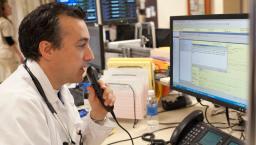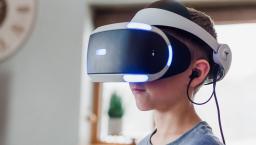Quality and Safety
The research team, which includes CHAI and the University of Iowa, will build an empirically supported maturity model for healthcare AI intended to create accountable, standards-based deployment by healthcare organizations.
The practice's optimal start rate – when a patient begins dialysis at home, receives a preemptive transplant or begins in-center hemodialysis – had been 40%. With the new electronic health record, it's now 90%.
A broad RTLS deployment, new augmented intelligence systems and 75-inch footwall monitors to enhance patient experience are just some of the innovations the New Jersey hospital hopes will satisfy patients, providers and staff.
The company recently expanded the platform's capabilities to support those in inpatient settings to work across hospital, ambulatory, telehealth, skilled nursing facilities and home health.
"Imagine if the tools on your computer that you need to do your job were so cumbersome, they caused you to be fatigued, burnout, and to have to work extra hours to get your job done. How would this impact the quality of your work?"
Eli Levin, who works on economic affairs and innovation for the Consulate General of Israel to New England, discusses how the war in Israel has affected digital health and technology.
The White House plan for "safe, secure and trustworthy" artificial intelligence wants the Department of Health and Human Services to have a mechanism in place to collect reports of "harms or unsafe healthcare practices," and act to remedy them.
But one of the health system's top clinical leaders for imaging informatics and radiology cautions that providers must maintain critical thinking when working with artificial intelligence.
NYU Langone researchers say the natural language processing tool, which was able to spot signs of anxiety, burnout and depression in staff during the pandemic, could be a key approach to safeguarding mental health going forward.
A study in the Annals of Internal Medicine shows that "ongoing telemedicine use is fairly effective in having limited return office visits, low emergency visit rates, and very low hospitalization rates compared to office visits."


























